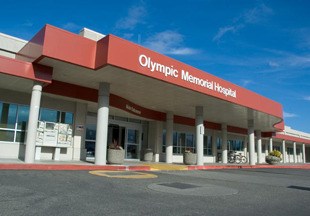A major expansion and additional staff soon will help Olympic Medical Center reduce wait times for emergency room patients, OMC officials say.
According to a report by Chief Nursing Officer Lorraine Wall to OMC’s board of commissioners in November, patients at the Olympic Memorial Hospital’s emergency department wait on average 29 minutes before being seen by a provider — lagging behind the Washington state (24 minutes) and national (24 minutes) averages. Patients at the top 10 percent of U.S. hospitals see providers in about 12 minutes, on average.
Olympic Medical Center officials are looking to change those statistics, says OMC CEO Eric Lewis, most notably with a $2.3 million expansion to the emergency department that will add six rooms (from 14 to 20) in March 2015.
Lewis said OMC also will add significant staff time from physicians, physician assistants and RNs. He added that OMC officials want to improve processes in the emergency department by adding “rapid turnaround” beds that help expedite those patients with emergencies that may have to wait as others with more serious conditions or injuries are looked after.
“Our goal is to reduce wait time (and) it’s a major goal,” Lewis said.
According to Wall’s report, OMC patients who are treated and discharged at the emergency department have an average length of stay an average of 157 minutes, behind the nations’ top 10 percent (93 minutes), the national average (137 minutes) and Washington state’s average (137 minutes).
OMC emergency department patients who are admitted to the hospital, however, have an average emergency department length of stay of 233 minutes, better than state (261 minutes) and national (272) averages.
“It’s certainly not where we want to be,” Wall said.
She said the statistics show OMC is focusing on patients with moderate to severe injuries or trauma, which can lead to longer wait times for those with lesser injuries or trauma.
“Those patients are more likely to come to a walk-in clinic or see their general physician if they were available,” Wall said. “They tend to spend a lot of time in our waiting room.”
Adding what OMC officials call “rapid turnaround” beds likely will reduce the waiting time averages, Wall said. OMC will add two beds to the department staffed by a physician assistant and nurse in January on a trial basis.
In a case such as a patient who suspects he or she has strep throat, staffers try to determine if the patient could be treated in an hour or less. The staff could then perform a rapid strep test, or rapid antigen detection test, while the patient returns to the waiting room. If the test comes back positive, the patient could return to the “rapid turnaround” room for counseling and prescription of medication.
The idea, Wall said, is to constantly move patients through those beds, helping the hospital reduce wait those times.



